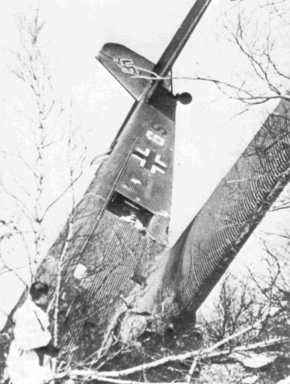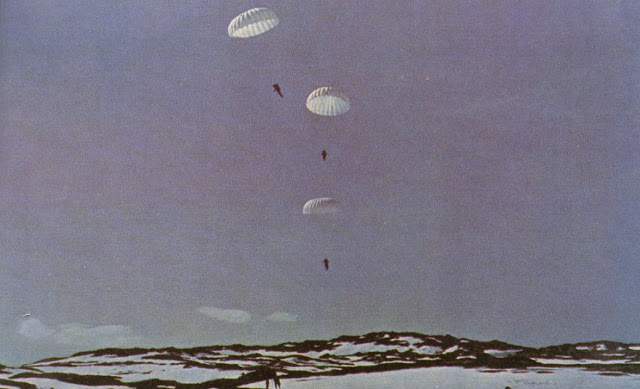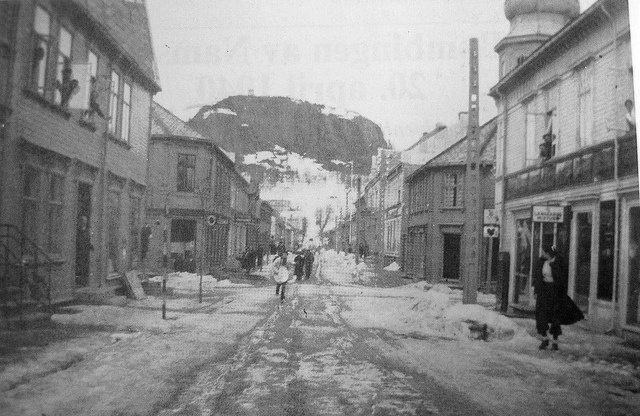Saturday 15 June 1940
 |
| Soviet troops enter Lithuania, 15 June 1940. |
At dawn, German 7th Army (Friedrich Dollmann) crosses the Rhine near Neuf Brisach between Strasbourg and the Swiss border, taking Strasbourg from French 8th Army and approaching Colmar. They break out into the Alsace Plain and have little between them and Panzer Group Guderian advancing from the north.
Elsewhere, the Germans capture the town, citadel and two forts at Verdun.
German 1st Panzer Division approaches Besancon, isolating the French 2d Army.
German 1st Army attacks French 3rd Army at Sarreguemines.
The Italian forces in the Alps still have not attacked the French. Mussolini orders Marshal Badoglio to attack by the 18th regardless of all other factors.
Operation Ariel, the withdrawal of the BEF, begins. 20-30,000 British and Canadian troops begin evacuating northwest France via Cherbourg and St Malo. This operation is often confused with Operation Cycle, which was a previous evacuation from Le Havre which concluded on 13 June. Today, the 52nd Lowland Division and survivors of the 1st Armoured Division begin embarking.
Commander of German XVIII Armeekorps Hermann Ritter von Speck perishes on the battlefield at Pont-sur-Yonne, France. His daughter later claims (in 2010) that he deliberately sought death on the battlefield, somewhat in the manner of General von Fritsch in Poland. This was due to an inner struggle between what he knew was right and his oath to the army and Hitler.
European Air Operations: Italian aircraft of the Regia Aeronautica raid Propriano, Corsica and southern France.
The RAF raids Bergen, destroying ammunition stored on the quays.
RAF Bomber Command sends strategic raids against the Ruhr and southern Germany. It also sends eight aircraft against Genoa.
The British drop leaflets over Rome.
 |
| No. 151 Squadron Hurricane I's equipped with Rotol Constant Speed Propellers fly off from North Weald, June 1940. |
Then, it torpedoes and sinks 2,238-ton Canadian freighter Erik Boye 60 miles west of the Scilly Isles. All 22 aboard survive.
US passenger liner Washington, having embarked an additional 852 American passengers in Galway, departs from Ireland for New York. It is transporting 1,872 US passengers who have been evacuated from North Africa, France, and the UK.
U-137 (Oberleutnant zur See Herbert Wohlfahrt) is commissioned.
Convoy 168 GF departs from Southend, Convoy OB 168 departs from Liverpool, Convoy SL 36 departs from Freetown.
Battle of the Mediterranean: Italian submarine Macalle runs aground and sinks off Port Sudan in the Red Sea.
North Africa: The RAF sends raids against Italian forces at Sidi Areiz, Assab and Jarabub.
The Italians send an airstrike against British positions at Sollum.
The French send 6 bombers against Tripoli.
German Military: Adolf Hitler sets forth plans to demobilize portions of the Wehrmacht once the campaign in France concludes, which appears to be in the offing.
British Military: The UK War Cabinet decides that the Channel Islands, British territory within sight of France, "are of no strategic importance and they won't be defended."
Anglo/US Relations: British Prime Minister Winston Churchill sends a telegram to President Roosevelt asking for destroyers. He states that his country will carry on the struggle "whatever the odds," but the destroyers are a matter of "life and death." Churchill, as former First Lord of the Admiralty, notes that England's survival "may well be beyond our resources unless we receive every reinforcement and particularly do we need this reinforcement on the sea."
 |
| Char B1 bis Fantasque destroyed in June 1940. |
German/Swedish Relations: Stockholm grants a German request for railroad transport of non-military supplies to Narvik.
Norway: German 3rd Mountain Division occupies Harstad.
Baltic States: Soviet troops enter Lithuania with no opposition. This is pursuant to the secret Ribbentrop/Molotov Pact of 23 August 1939, and a last-minute agreement by the Lithuanian government to their ultimatum of 14 June. They occupy Kaunas and Vilna. President Antanas Smetona flees to Germany, barely escaping an attempt to capture him by Prime Minister Antanas Merkys. However, the Soviets do capture a minesweeper named... President Smetona.
Vladimir Dekanozov arrives in Kaunas as the new governor.
Soviet troops also take the Latvian border posts of Masļenkos and Smaiļi.
Albania: The Italian-controlled government declares war on France and the UK.
Applied Science: Dr. Vannevar Bush, pursuant to his 12 June 1940 discussion with President Roosevelt, becomes the head of the National Defense Research Committee.
The University of California's Dr. Ernest O. Lawrence begins supervising the construction of a giant cyclotron. This is a key step in the development of plutonium, the essential ingredient of an atomic bomb.
US Government: A new Navy bill becomes law that provides for 10,000 planes and 16,000 aircrews. The numbers are increasing every day now, as this new figure is more than twice the figure from the bill of 14 June.
China: At the Battle of Tsaoyang-Ichang, the Chinese 2nd Army Group and 31st Army group arrive to support the Ichang sector against the Japanese 11th Army.
Italian Homefront: A Roman man becomes the first civilian casualty of the war in that city when he is struck down by falling anti-aircraft shrapnel during an RAF leaflet drop.
French Homefront: The Swastika is raised over the Palace of Versailles, which saw the birth of the so-called Second Reich of Wilhelmine Germany.
Crowds, which were absent during the German victory parades, assemble to watch French POWs being transported through town.
Southern France is packed with refugees, and supplies of everything are tight.
British Homefront: George Orwell suddenly realizes that his French publisher now can't publish his next book, and notes "If so, I am £30 to the bad... The sensible thing to do now would be to borrow money right and left and buy solid goods."
June 1940
June 1, 1940: Devastation at Dunkirk
June 2, 1940: Hitler Visits France
June 3, 1940: Operation Paula
June 4, 1940: We Shall Fight
June 5, 1940: Fall Rot
June 6, 1940: Weygand Line Crumbling
June 7, 1940: British Evacuating Narvik
June 8, 1940: Operation Juno
June 9, 1940: Norway Capitulates
June 10, 1940: Mussolini Throws Down
June 11, 1940: Paris an Open City
June 12, 1940: Rommel at St. Valery
June 13, 1940: France Goes Alone
June 14, 1940: Paris Falls
June 15, 1940: Soviets Scoop Up Lithuania
June 16, 1940: Enter Pétain
June 17, 1940: The Lancastria Sinks
June 18, 1940: A Day of Leaders
June 19, 1940: U-boats Run Wild
June 20, 1940: Pétain Wilts
June 21, 1940: Hitler's Happiest Day
June 22, 1940: France Is Done
June 23, 1940: Hitler in Paris
June 24, 1940: Six Million Jews
June 25, 1940: German Celebrations
June 26, 1940: USSR Being Belligerent
June 27, 1940: Malta in Peril
June 28, 1940: Channel Islands Bombed
June 29, 1940: Gandhi Insists on Independence
June 30, 1940: Channel Islands Occupied
2020









